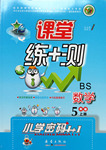题目内容
The Netherlands on Monday introduced its first-ever " intelligent bicycle , fitted with electronic devices to help bring clown the high accident rate among elderly cyclists in the bicycle-mad country.

Developed for the government by the Netherlands Organization for Applied Scientific Research (TNO) , the intelligent bicycle, runs on electricity.A commercial-available bicycle is expected to be on the market in the next two years and should sell for between 1, 700 to 3, 200 euros per bicycle.
The devices on the bike are linked through an onboard computer with a vibrating (震动的) warning system fitted in the bicycle's saddle and handlebars to warn cyclists of the coming danger.
The saddle vibrates when other cyclists approach from behind, while, the handlebars do the same when barriers appear ahead.
" Accidents often happen when cyclists look behind them or get a fright when they are passed at high speed," said Maurice Kwakkernaat, one of TNO's research scientists involved in the project."The onboard system technology has already been at work in the car industry," he said.
'' More and more elderly people are using a bicycle, not only for short distances, but also for longer distances," Dutch Environment and Infrastructure Minister Melanie Schultz van Haegen told AFP."This type of bicycle is truly needed in the Netherlands because it will help us bring down the number of elderly people who are injured every year and allow them to continue to enjoy cycling," she said.
In the Netherlands, bicycles outnumber the population of 17 million by at least one million and there are some 25,000 km of bicycle path in the country.Those statistics are set to grow as more and more people take to two-wheeled transport, leading to an increased risk of injury.
Last year, 184 cyclists died in the country, of which 124, or 67% , were older than 65, according to the Central Statistics Office.The year before, 200 cyclists died, the majority of victims also being elderly.
The current model weighs 25 kilograms but researchers are working on making the onboard systems smaller.
1.The intelligent bicycle is aimed to ______.
A.protect the environment
B.help reduce traffic pressure
C.popularize the use of bicycles
D.improve safety for elderly cyclists
2.Which part of the intelligent bicycle will vibrate when other cyclists approach it from behind?
A.The saddle.
B.The wheels.
C.The handlebars.
D.The onboard computer.
3.We can learn from the passage that ______.
A.the elderly ride bicycles wherever they go
B.the elderly are planning to give up cycling
C.the number of elderly cyclists is decreasing
D.the accident rate among elderly cyclists is high
4.Which is the best title for the passage?
A.A Test Bicycle
B.Elderly Cyclists
C.A Smart Bicycle
D.A Bicycle-mad Country
 红果子三级测试卷系列答案
红果子三级测试卷系列答案 课堂练加测系列答案
课堂练加测系列答案 轻松课堂单元测试AB卷系列答案
轻松课堂单元测试AB卷系列答案

